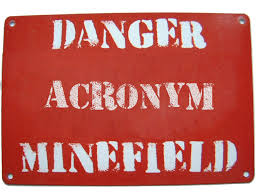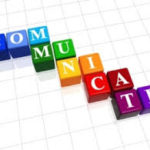In the last two days I have received several emails about WEAAD. Yup. WEAAD… My response:

As it turned out, people were sending me these WEAAD emails because they want to publicize a worldwide (the “W) day devoted to an important cause that is right up my alley as a geriatrician: Elder Abuse. Yet when first confronted with the acronym I wondered: Is this “WE ADD” as in “we can do basic math!” or is it “WE have ADD” and consequently make typos or spelling mistakes, such as saying AAD when we mean ADD? In either case, it made no sense that they were contacting me.
WEADD stands for World Elder Abuse Awareness Day. I’ve been getting emails because it’s this Sunday, June 15, 2014.
I hadn’t heard of it and my career is devoted to the care of older adults, so don’t worry if you hadn’t either. Indeed, I imagine the fact that we hadn’t heard about it is what motivated the campaign. It’s relatively new and they want us to know about it. They want to become a household word. My fear is that their acronym will slow them down.
I can’t take action, even when I want to, if I can’t figure out what the topic is.
Worse still, when people use an acronym that’s not either well known or easily discernable, they are communicating inadvertently that their communication skills aren’t up to par. As a result, their credibility goes down before they’ve even got a toe through the door of their target audience.
In a world flooded with acronyms (they are used and sometimes confused with abbreviations in texting and very commonly used, with sometimes funny and sometimes disastrous consequences, in medicine), this matters.

So how do you create an acronym that works?
1. The best acronyms spell out a word that is related to their cause, function or meaning, or one that elicits positive feelings or associations. Here are some examples:
– LEAD: for a leadership program, i.e. Leadership Education and Development
– LEAP: for an educational training module, Learning from your Experiences As a Professional
– SAGE: for a program in which students at UT Southwestern learn about aging, i.e. Southwestern Aging Geriatrics Education program
2. Even when the letters don’t spell out a word with meaning related to the subject, it helps if what is spelled out feels like a word:
– LASER: Light Amplification by Stimulated Emission of Radiation
– RADAR: RAdio Detecting And Ranging
– AWOL: Absent With Out Leave
– SCUBA: Self-Contained Underwater Breathing Apparatus
3. Whether you have a good acronym or one that is obtuse and not well known, define it early and often so people can easily and quickly figure it out. For WEAAD this might mean email headlines with both the acronym and the words ‘elder abuse.’
Publishers have long acknowledged the challenges of acronyms. Generally their rules are:
– only the most well known acronyms can be left as such: AIDS, US, UK
– spell out all other acronyms, at least the first time they appear in the article
 This makes the process sound if not easy, then at least straightforward. It isn’t always. I know. I coined the term Public Medical Communication even though I knew the words were awkward, jargony and confusing an came with an obtuse acronym: PMC. But I couldn’t think of anything better and the words were apt. I imagine that’s what happened to WEAAD too.
This makes the process sound if not easy, then at least straightforward. It isn’t always. I know. I coined the term Public Medical Communication even though I knew the words were awkward, jargony and confusing an came with an obtuse acronym: PMC. But I couldn’t think of anything better and the words were apt. I imagine that’s what happened to WEAAD too.
The hope, of course, is that eventually the concept, organization and acronym will be so well known and widely used that people won’t even realize that it doesn’t make sense. Maybe by 2017, I’ll mention WEAAD at a cocktail party and heads will nod knowingly. I hope so.
Luckily for me and WEAAD, there’s good precedent (though I imagine there are far more we’ve never heard of that died a quiet death for failing to do #1,2 or 3 above):
– RSVP
– AIDS
– BYOB
– FDA
To say nothing of TTFN or Ta Ta For Now, my sendoff for this blog post…after a final reminder to support WEAAD!
